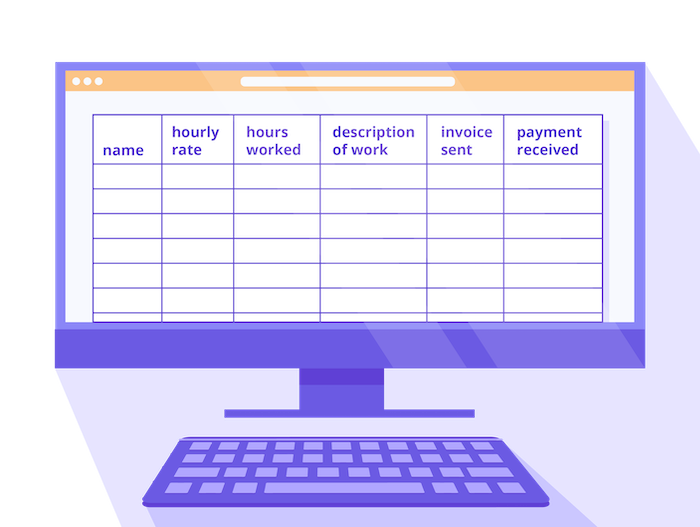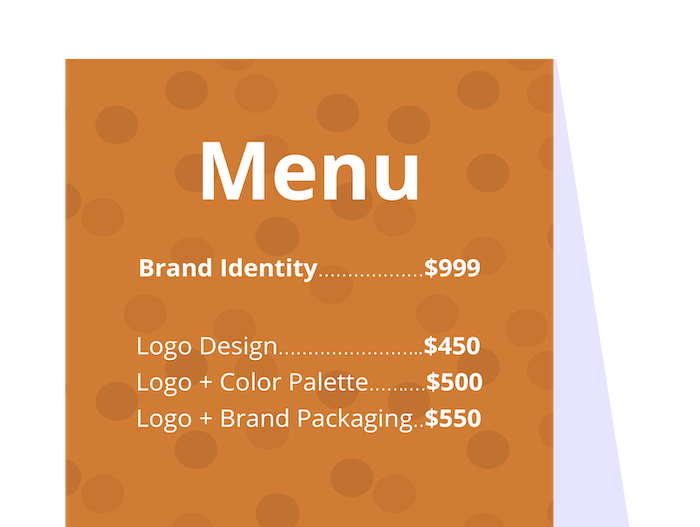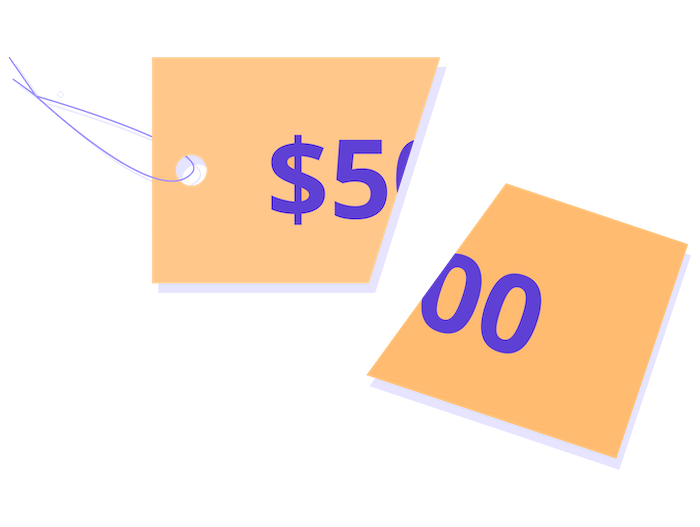What to Charge as a Freelancer: Flat Rate vs. Hourly

As a freelancer, you have the power to set rates. It’s one of the perks of the gig, but it’s also a big responsibility — and you have to live with the results of your choices. Regarding rates, you have a few significant decisions to make: what pricing model to go with, what rate to charge, and whether to incorporate options like bulk and early payment discounts, late fees, and progress payments.
Make a Free Invoice NowFor new solopreneurs, these will be some of the most impactful decisions to make about their businesses. It’s crucial to consider carefully, make informed decisions that feel right, and see what pans out.
Hourly Pricing: The Basics
Hourly pricing is just what it sounds like — charging a client an explicit hourly rate for the number of hours worked. The fundamental logic of hourly pricing is to charge according to how much time you spend completing the job.
Some freelancers use a sliding scale (which can be transparent or not) based on factors like the client’s budget, the desirability of the work, the social justice value of the work, etcetera. Once a price point on that sliding scale has been agreed upon, it works the same way as a standard flat rate.
Advantages of Hourly Pricing

Hourly pricing protects you from poor time estimation on your part and scope creep on the client’s part. Because estimating the time it will take to complete a job and clearly defining the scope of work for a job are skills that improve with experience, hourly pricing can be an excellent fit for newer freelancers.
Here’s a situation that hourly pricing can prevent: a new web designer gets a client. They’re excited and think they can build the website in about 40 hours. The designer consults the Bureau of Labor Statistics and sets their hourly rate at a modest $35 an hour. This rate leads to a total charge of $1400 to build the site.
However, halfway into the job, they’ve already put in 30 hours of work. Then, they get an email from the client asking to add an additional page to the site, with no mention of a change in rate. Because the designer didn’t define the scope of the work, underestimated their time, and offered a flat rate, the job is now worth closer to $20 an hour. Had they priced hourly with an estimate, they could have let the client know adding another page to the site would take six additional work hours at the same rate.
Flat Rate Pricing: The Basics

Flat-rate pricing can work in several ways. Per-project flat rate billing assigns a specific dollar amount to a specified scope of work. The nature of your business (in particular, the similarity and consistency of your work) will inform which of the following models is most appropriate.
A “menu of services” charging a specified dollar amount for routine jobs. For example, a hair salon menu may have one price for a haircut, another amount for highlights, and an additional cost for styling.
A “per-time” price charges a client by a specified unit of time (day, week, month, etc.), by a stated amount of work, or by a body of work defined in scope but not volume.
- A fitness trainer might charge clients a monthly rate inclusive of three weekly meetings and regular email support.
- A landscaper might charge a per-month rate for total maintenance of a client’s yard. They know they’ll devote more time to that job during the summer when more planting and watering are needed and less during the winter when they’re simply managing snowfall.
- A costume designer might have a day rate for an eight-hour workday, inclusive of any available services.
A custom price is a custom quote for each individual job based on factors like estimated time investment, interest in the work, the potential for ongoing business, etc.
Benefits of Flat-Rate Pricing
Flat rate pricing has several distinct advantages. It incentivizes efficiency, which is a big deal. A year into the solopreneur life, an SEO writer likely works twice as fast as when they started. Charging per word or project will double the amount they can do in any given workweek, doubling their potential income. If they were pricing hourly, on the other hand, they’d be making half as much money as in the beginning or making the same amount for double the work.
Flat rate pricing also separates the value of a job from the labor it takes to perform it, which is a critical difference once you become a true expert in your field. A digital marketing pro, for example, brings a tremendous amount of value to an ad campaign without necessarily investing a ton of hours of labor. They are billing for their mind, talent, experience, and effectiveness, not their labor— and flat rate pricing gives them the freedom to move toward that goal.
Special Situations

In addition to a primary pricing model, it’s essential to create policies (internal or otherwise) to address common issues with pricing and billing.
Discounts
Some freelancers offer discounts for bulk work or early payment. If you charge hourly, you’ll need to decide and specify whether those discounts will apply to the hourly rate or come off the top of the bill.
Confining percentage discounts to a whole bill gives more flexibility to opt out of offering the deal to the same client in the future. Consider two approaches to this scenario: say you’re an illustrator working on a series of greeting card designs, and you offer a client a 10% discount on a block of work that includes 100 illustrations and takes 200 hours to make.
If you typically charge $30 per hour, you can apply the 10% discount to the hourly rate or the total after the hourly fee is calculated. Both ways of billing net $5400, but the latter approach provides a better ability to charge the same client the standard hourly rate on the next job they request.
Progress Payments
Deposit and progress payments are made at specified sequences while completing a job. You can use them with flat-rate billing or hourly pricing, but you’ll need to construct the billing structure differently with each model.
Progress payments for a flat-rate job need to be pegged to specific signposts within the job itself. For example, with a kitchen renovation, a contractor might ask for a progress payment:
- To order materials upon the start of work on-site
- When the appliances are installed
- When the job is wrapped and cleaned
With hourly billing, you’ll set progress payments at sequences within the total billable time — so, on a 60-hour job, you might ask for an initial deposit, a progress payment at 30 hours, and a final payment upon completion and delivery.
The Takeaway
While it’s easy to say, “hourly pricing is for newbies, a flat rate is for pros,” the truth is much more nuanced than that. Some seasoned experts prefer the predictability, simplicity, and transparency of hourly pricing, while some new freelancers do well with flat rate pricing right out of the gate. There is a pool of elite hourly freelancers charging well into the $200s.
Consider the pros and cons of your chosen pricing model and remain willing to assess its effectiveness. One of the great freedoms of freelancing is the ability to make significant changes with no one’s permission, so if you’ve been pricing hourly and it’s been feeling limited, it’s simple enough to switch gears.
The Point of Pricing
Pricing sets your business’s tone. It is well-known in marketing psychology that perceptions of scarcity, exclusivity, and satisfaction highly influence human behavior. Use those tendencies to your advantage when building a business model from scratch.


